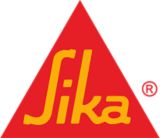Sikacrete®-920 UHP
Ultra-high performance (UHP) cementitious concrete repair mortar with optional steel fibre-reinforcement to produce an ultra-high-performance fibre-reinforced concrete (UHPFRC)
Sikacrete®-920 UHP is a one-part, cementitious, ultra-high strength concrete repair mortar which can be mixed with steel fibres on demand to obtain an ultra-high-performance fibre-reinforced concrete (UHPFRC). Suitable for strengthening of existing steel reinforced concrete structures by supplementing the steel reinforced concrete and for structures made of UHPFRC with steel reinforcement. Layer thickness up to 80 mm. Sikacrete®-920 UHP with steel fibres meets the requirements of SIA 2052 (UB).
- Ultra-high mechanical properties.
- Adaptable - can be used with or without steel fibres.
- Ideal for structures subjected to high stress or repeated loading, but cannot be renovated regularly (e.g. highway bridges).
- When compared against conventional concrete, reduced amount required to provide same properties.
- Allows significant reduction of application thickness, or reduced area of structural elements (e.g. beams, pillars, columns, etc.).
- Homogeneous and uniform in nature - no coarse aggregate which could segregate.
- Post-crack tensile strength.
- Very high energy-absorbing properties ('toughness').
- High impact and abrasion resistance.
- Resistant to dynamic loading and seismic activity.
- Very dense material, with low porosity and permeability.
- Minimised crack tendency for long durability.
- Excellent freeze-thaw resistance.
- Rapid strength gain, accelerating construction times.
- Cost-effective (reduced thicknesses required, shortened construction times, low maintenance costs and depreciation, etc.).
- Euroclass A1 reaction to fire.
